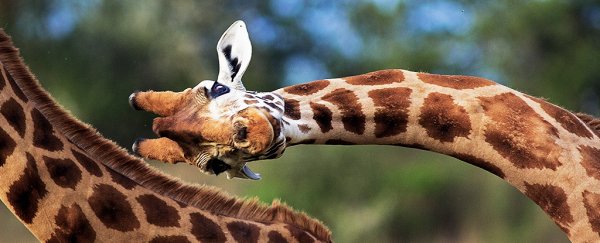Published in 1859, Charles Darwin's On the Origin of Species made a number of bold claims about the nature of evolution – including the suggestion that an animal species with greater diversity in its line will produce more sub-species, too.
This assumption is not as obvious as you might think at first. Only a couple of years ago, this hypothesis was finally found to be true for birds. Now, researchers from the University of Cambridge in the UK have shown that Darwin was right on this point for mammals, too: Mammal subspecies are indeed important in evolutionary terms, and perhaps more so than previously thought.
Apart from being an important contribution to our understanding of evolution in general, the findings could also be useful in ongoing conservation efforts – helping experts to figure out which species need to be protected in order to ensure their survival.
"My research investigating the relationship between species and the variety of subspecies proves that subspecies play a critical role in long-term evolutionary dynamics and in future evolution of species," says biological anthropologist Laura van Holstein.
"And they always have, which is what Darwin suspected when he was defining what a species actually was."
Darwin actually called them "varieties", but the idea is the same – groups within a species with their own traits and breeding ranges. There are three subspecies of northern giraffe, for example, and 45 subspecies – the highest in the animal kingdom – of the red fox.
Human beings, on the other hand, don't have any subspecies.
To test Darwin's hypothesis, van Holstein looked at a huge database of animal classifications, analysing the collected knowledge we have about mammal species and subspecies to look for patterns.
The data showed that diversification between species and between subspecies was linked, as Darwin had suggested, but there was more – subspecies tend to form, diversify and increase differently depending on habitat (land versus sea, for example).
The findings show that the correlation between species diversity and subspecies diversity is strongest in non-terrestrial mammals - those living in the sea, or spending a lot of time in the air – and thus less affected by physical boundaries like mountains.
In animals like bats and dolphins, the researchers say, it might be better to consider subspecies more as the start of a new species rather than the evolution of an old one.
A further question posed by the researchers was whether there was any relationship between subspecies and the eventual creation of a whole new species.
"The answer was yes," says van Holstein. "But evolution isn't determined by the same factors in all groups and for the first time we know why because we've looked at the strength of the relationship between species richness and subspecies richness."
The discoveries on subspecies habitat are particularly significant when it comes to conservation, because the habitats of so many animals are under threat from climate change and human activity -and these findings indicate that our actions really are having an impact on the process of evolution.
"Evolutionary models could now use these findings to anticipate how human activity like logging and deforestation will affect evolution in the future by disrupting the habitat of species," says van Holstein.
"The impact on animals will vary depending on how their ability to roam, or range, is affected. Animal subspecies tend to be ignored, but they play a pivotal role in longer term future evolution dynamics."
The research has been published in Proceedings of the Royal Society B.
